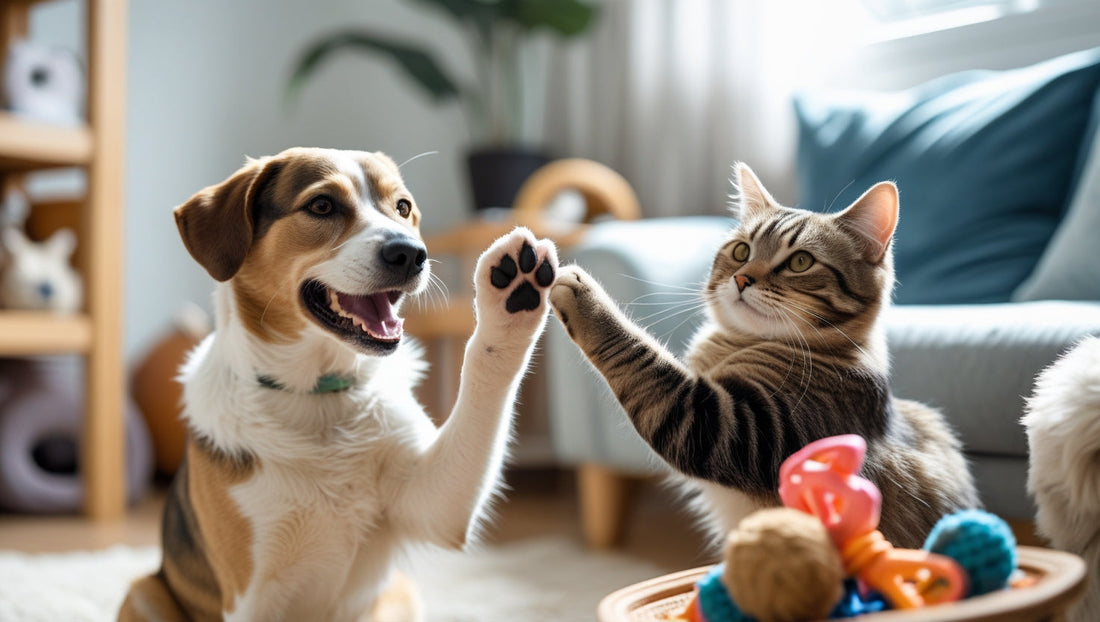🐾 Is Your Pet Left- or Right-Pawed? Find Out With These Simple Tests
Have you ever caught yourself wondering why your dog always starts walking with the same paw or why your cat swipes at toys from one side more than the other? Just like humans, animals can show a preference for one side, meaning they might be left- or right-pawed. This fascinating trait is more common than you think and can reveal interesting insights about your furry friend’s personality, behavior, and even emotional state.
In this post, we’ll dive deep into what it means for a pet to have a dominant paw, explore scientific research on the topic, and give you fun and easy tests you can perform at home to discover your pet’s paw preference. Whether you have a dog, cat, or both, this is a playful way to understand your companion better.
🧠 What Does It Mean for a Pet to Be Left- or Right-Pawed?
Paw preference, or lateralization, refers to the tendency of animals to favor one side of their body when performing tasks. It is similar to how most humans are either right- or left-handed. Paw dominance reflects which side of the brain is more active or dominant, since the brain controls the opposite side of the body. For example, a right-pawed pet’s left brain hemisphere is typically dominant, while a left-pawed pet relies more on the right hemisphere.
This brain lateralization is not just an interesting neurological fact. It is connected to how pets perceive their environment, react to stress, learn new things, and interact socially. Pets with a strong paw preference may approach challenges with more confidence. Some studies indicate left-pawed dogs could be more sensitive to stressful or threatening situations. Understanding paw dominance can help tailor training and enrichment activities better suited to your pet’s natural tendencies.
By recognizing which paw your pet prefers, you might also get clues about their emotional well-being and cognitive style, giving you the chance to support them in more personalized ways.
🧪 What the Science Says About Paw Preference

This phenomenon is supported by scientific studies worldwide. In dogs, researchers like Deborah Wells and Sarah Millsopp at Queen’s University Belfast have studied paw preference by observing which paw dogs use when trying to hold objects or reach treats. They found that approximately 50% of dogs show a clear and consistent paw preference. Around 40% are right-pawed, about 30% are left-pawed, and the rest are ambidextrous.
Interestingly, cats show gender-based tendencies. Research indicates that male cats are more likely to be left-pawed, while female cats tend to be right-pawed. These patterns influence how cats play, explore their environment, and interact with other animals or humans. The science behind why gender differences exist in paw preference is still developing but adds an intriguing layer to understanding feline behavior.
Some studies suggest that left-pawed dogs might be more reactive to stress or changes in their environment. This does not indicate a problem but rather reveals how pets process the world differently.
🏠 How to Tell If Your Pet Is Left- or Right-Pawed
You do not need any fancy tools or experience to find this out. You can do simple, enjoyable tests at home to observe which paw your pet prefers to use. To get reliable results, repeat each test at least ten times over several days and keep track of the paw they favor.
✔︎ The Paw Shake Test involves asking your dog to “shake” or “give paw.” Observe which paw they offer more often. For dogs without this training, pay attention to which paw they lift first to get your attention or during playtime. For cats, offer a treat just out of reach and see which paw they use to reach for it.
✔︎ The Stair Start Test consists of placing your pet at the base of a staircase and watching which paw they use to take the first step. Repeat several times for consistency.
✔︎ The Toy Play Test is to give your dog a chew toy or ball and observe which paw they use to hold or bat at it. For cats, dangle a feather or string toy and note which paw they use to swipe at the toy first.
✔︎ The Treat Retrieval Test requires putting a tasty treat inside a jar, puzzle toy, or Kong. Watch which paw your pet uses to try to retrieve the treat. This test is particularly effective because it requires intentional, repeated paw use.
After performing these tests, if your pet uses the same paw in at least seven out of ten attempts, you can confidently say this is their dominant paw.
🧸 Why Paw Preference Matters and How You Can Use It
You might wonder why knowing this small detail is useful. Paw preference can offer meaningful insights into your pet’s behavior and well-being. It helps you understand how your pet approaches challenges, improving your training strategies.
Recognizing sensitivity or reactivity associated with paw dominance can help reduce stress by adapting your pet’s environment. You can select toys and games that stimulate both paws, promoting better physical and mental coordination. Noticing a sudden change in paw use can be an early warning sign of injury or discomfort.
Stimulating both sides of your pet’s body through balanced activities encourages brain health and can make playtime more enriching and fun. Try rotating toys that encourage the use of both paws or introducing puzzles that require reaching and pawing from different angles.
🐕 Ready to Discover Your Pet’s Dominant Paw?
Now it’s your turn to try these simple tests with your furry companion. Whether your pet is a proud lefty, a classic righty, or ambidextrous, this little discovery is a fun way to bond and learn more about their unique personality. What paw does your pet prefer? Did any of the tests surprise you? Share your experiences and photos in the comments below — we love hearing stories about your pets!
Don’t forget, understanding your pet’s paw preference can deepen your connection and help you provide better care. Give it a try and let us know what you find!







1 Kommentar
My Pet is rightly well I think so